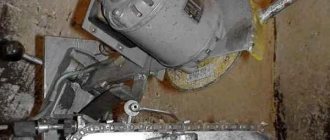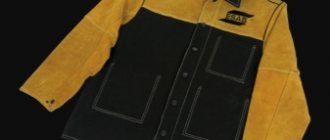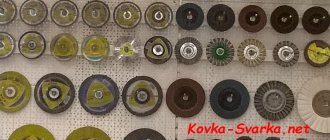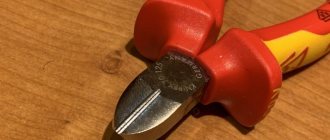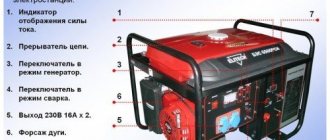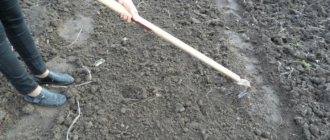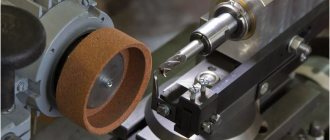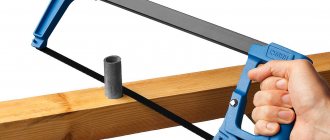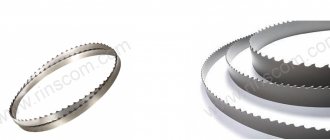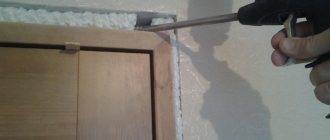Bow saws have long occupied a place of honor among carpentry tools. And although their design and design have changed significantly over the years, the basic principle of operation of these saws remains the same. What is the advantage of this tool and what makes it stand out from the rest?
What is a bow saw used for?
It is convenient to use a jigsaw to make short, mainly transverse cuts, and a hacksaw to make long, longitudinal cuts. And only with the help of a bow saw can you make a variety of dividing cuts, both with dry and wet wood. In addition, for a bow saw for wood, it does not matter how the wood is cut - along or across the grain. If we add to this the ability to work with one hand (the first “bows” were exclusively two-handed), it turns out that the tool in question can be used for cutting wood:
- in longitudinal;
- in transverse;
- in figured;
- in an angular direction.
The only insurmountable obstacle for bow saws is the transverse dimensions of the workpieces - for thick logs it is still better to use a power tool. However, you have to work much less often with thick logs...
Three circumstances give versatility to bow saws for wood:
- Adjustable tension of the saw blade (in some ways this process is similar to pulling the string of a bow, hence the name of the tool). Testing shows that bow saws can create tension forces of up to 100...120 kg without destroying the saw blade.
- The special shape of the teeth allows for both roughing and finishing cuts.
- The size of the saw is compact, which ensures its use even in cramped environments.
Modern manufacturers of bow saws and accessories for them - trademarks Bahco, Stanley, Intertool, Fiskars and others - complete their products with different types and designs of saw blades, which increases the ease of use of the tool.
What it is?
Unlike conventional wood hacksaws, saws can be used to accurately cut small workpieces at different angles relative to the direction of the grain.
Tool Features:
- Thin cutting line - thanks to a slight tooth set.
- The canvas works when moving both forward and away.
- The bow saw can be held with both hands.
- Suitable for cutting along curves.
If earlier bow saws were made of wood and they looked like large frames, now the main manufacturing material is a thin-walled steel metal pipe and a plastic handle; to improve ergonomics, the surface of the handle is covered with rubber. The mechanism for tensioning the blade is the same as that of conventional hacksaws. The type of blades is varied and differs in the number and size of cutting teeth per inch. Most often, the blade is hardened; in this case, they cannot be sharpened.
Expert opinion
Levin Dmitry Konstantinovich
Some modifications with a length of more than 500 mm can be used by two people, like two-handed saws.
The device of a bow saw for wood
The modern “onion” includes:
- Frame made of rolled profiles. Depending on the size of the saw blade - and they are usually standard: 350 mm, 530 mm or 760 mm, the frame can be made in the form of an oval trapezoid (for longer blades) or an oval triangle (for shorter ones).
- A handle whose profile prevents sudden injury to the worker’s fingers.
- Saw blade.
- Devices for tensioning saw blades.
- Fastening the canvas to the frame.
The frame of a bow saw for wood has special requirements - it must be rigid and at the same time light, so as not to increase physical stress during sawing. A special tubular profile with a very small width satisfies the task. This makes it easy to bend it during the manufacturing process to the required frame configuration without losing the strength of the part, providing the saw with the necessary mobility.
One of the main differences in the design of modern bow saws for wood is the principle of saw blade tension. For example, the Gardena or Proline brands use a handle with an eccentric for tensioning: by using it, changing the angle of inclination of the handle relative to the longitudinal axis of sawing, you can thus adjust the tension force.
Manufacturers of saws from Bahco Stanley have taken a different path: there a special screw mechanism for tensioning the saw blade is mounted in the handle. The choice is determined by ease of use, however, the presence of a screw mechanism provides increased tension accuracy, and does not depend on random movements of the user, when the position of the handle during sawing can randomly change. Therefore, it is recommended to use a rotary tension mechanism if you have some experience working with a bow saw.
To fasten the saw blade to the opposite part of the “string” (frame), removable cotter pins or wing screws are used. The latter are more reliable, since the cotter pin, usually made of mild steel, wears out over time and can spontaneously come out of the mounting hole.
Types of hand saws
Jigsaws and other power tools are much more productive than any hand saw, but electricity is not available for every job. Power supply from batteries and batteries only partially solves this problem, since the power of batteries is often not enough for deep cuts and long-term use. And the cost of purchasing a power tool is more than noticeable, as is the cost of eliminating any malfunction.
Therefore, hand-pulled saws, hacksaws and jigsaws remain in demand for a wide variety of construction, repair and household work . According to their design, hand sawing tools are divided into several types:
- An ordinary hacksaw, with one handle. It has versatility regarding the materials being processed - it can cut not only wood or plastic, but also metal of small thickness. One-handed hacksaws are widely used when it is necessary to saw off bars for a wooden frame or corners for canopies made of metal profiles - that is, when the width and thickness of the workpieces is small, usually within 10-15 cm;
- Hacksaw reward. A saw similar in appearance to a plane - that is, small in size, with two handles and a similar application of human strength. It is used for making straight, narrow and relatively deep cuts in wood of various species. Among other hand saws, it stands out for its difficulty in mastering; the reward for skillful handling of it is precise grooves for key joints;
- Backing and passing saws. They differ from hacksaws in having a straight working blade and an angled handle. Backing and passing saws are convenient for making straight and angular cuts in wood, for sawing small sections, and for cutting precise grooves. For example, to join individual planks when installing laminate flooring on a ceiling or joining MDF wall panels, it is best to use such a precise (albeit low-performance) tool;
- A factory-made, folding or homemade bow saw for wood is a bulky device and not nearly as durable as saws with a solid blade. However, only with a bow-type saw can you cut wood lengthwise and crosswise, cut workpieces along complex lines, and do all the work alone, without assistants or electric tools.
In addition to durable solid wood, the bow saw blade perfectly and accurately “bites” into MDF panels, wood-fiber and particle boards, into plastic blanks of any size, into sheets of hardboard and plywood. Such saws can be adjusted to the type of material being processed and depending on the type of cutting - straight or curved.
Bow saw blade
The versatility of this tool also determines changes in the design of the saw blade, in particular its teeth. Most often used:
- Saw blades with uniform tooth pitch. They are designed for smooth cutting of wood with a relatively short length.
- Canvases with the so-called “American” tooth, when after 3..4 ordinary teeth there is a double or “Kremlin” tooth. This configuration of the cutting part of the saw blade allows for longer and more complex cuts. The frequency of alternation determines the accuracy of the result: the closer the double teeth are located to each other, the less clean the cutting line will be.
- Spatial teeth with wide spacing. A blade with such teeth is useful for maximum cross-sectional sizes of wood being cut. The cutting force and the amount of waste increase, but sawing productivity becomes the highest possible.
Types of canvases
Since the bow saw is (mainly) used when working with wood products, there are three types of blades:
- A blade with single teeth, which are located at equal distances from each other. These saws are used for smooth, accurate cutting of material.
- The cutting edge has double teeth (they are called “Kremlin” teeth). This position is required for more complex and precise cutting. If the tooth pitch is not too frequent, then cutting the material will be better and more accurate, and there will be few chips.
- A blade whose teeth on the working part are arranged in two rows at a fixed distance. The purpose of such teeth is to work with thick workpieces that are difficult to cut: for example, raw wood.
To create the canvases, special grades of steel are used. Each manufacturer keeps its technologies secret.
What is it and what is it for?
A bow saw can easily be defined as an outdated device. But even if you have the entire necessary set of power tools stored at home, there may be many situations when you cannot do without a hand-held bow saw. If we consider the main purpose of this tool, it is worth noting that this kind of device is intended for accurate sawing of metal parts, as well as for working with wooden surfaces.
A bow saw can be used to make various parting cuts with any type of wood. We must not forget that for a product intended for cutting wood, the method of cutting it – lengthwise or crosswise – does not matter. There is also the ability to work with only one hand. This tool can be easily selected for cutting wood: in the longitudinal direction, as well as in the transverse and figured, even in the angular direction. True, for thick logs it is better to choose a more serious tool.
If we compare a standard saw with two handles with a bow saw, we should highlight the following positive features over the classic product:
- a bow tool will allow you to make a much more beautiful cut;
- you will spend much less effort - sometimes you can work with a bow and a pair, which will not work when working with a hacksaw saw;
- easy care.
Design features
This kind of saw is called a bow saw for the reason that its structure will be as elastic as that of a combat bow. At its core is a machine made of high-quality racks. There are 3 racks in total - 2 on the sides and 1 placed horizontally. Racks are most often made of hardwood. At the bottom of the vertical posts there are similar holes for attaching handles to them. The horizontal stand is called the mullion.
The working handle can be called a real piece of carpentry art, since the convenience of working and the percentage of its productivity will directly depend on its quality. The handles are most often round in shape; at the end there are cuts and special holes for installing the working blade.
There are several original varieties of bow saws.
- Folding bow saw , which is simply an indispensable accessory on hikes, which involve independently constructing a resting place using trees adjacent to the camp. Most often it is called hiking or tourist. Some manufacturers develop this kind of tool specifically in order to use it in difficult conditions. The main feature of this saw is its folding design. The product will actually quickly fold and unfold, and will not require additional tools or serious effort.
- Hand-held bow saw for wood. Before you start working, you will need to carefully examine the product itself and find out for yourself that there are no defects on those parts of the racks that are made of durable wood, and that the canvas is intact.
- Bow saw for metal. Before purchasing a specific tool, find out exactly what material you will need to process. After this, it will be possible to choose the most convenient shape for the work, as well as the length and width of the teeth, and the speed of movement of the device.
Important! The best option would be to purchase a product made of hardened steel - this is a 100% guarantee of its strength and long service life.
Zerkalov Studio
If you set out to find a bow saw, then searching on the Internet will not lead you anywhere beyond garden saws. And for a thin sheet of 4-5 mm, you can immediately go to Ebay or Amazon, because in Russia there is definitely no such thing. A bent pipe beam is not at all what I needed.
A bow saw in its classic wooden version has much more capabilities when working correctly. These include curly cuts, cutting deep tenons, and cutting lengthwise (for example, sawing a 50 mm thick board into two 25 mm boards), if necessary, you can use blades of different lengths, changing only the size of the support bar. A bow saw is essential in the workshop even if you have a band saw as a machine tool, as there are situations where only a hand tool can do a job. The wooden bow saws that I managed to find were not to my liking for their performance... they are rough and the price is very inadequate. Therefore, as usual in such cases, I tried to do it myself. The prototype was a saw made by guys from New York under the Gramercy Tools brand. On their website there are freely available 1:1 drawings in pdf. I took the general appearance from them, and used my own dimensions, modifying the shanks. Material oak 30 mm. I cut it to spare.
I planed the width of a template that I made from cardboard.
Before cutting out the saw posts, I drilled holes for the handles and used a chisel to make a recess for the tenon of the spacer bar. All irregularities after the jigsaw were removed with a plow.
Then I used a hand plane to narrow the upper parts of the posts, having previously marked the center for reference.
At the bottom I worked with a rasp and a file in the area of the holes for the handles, and then used a plane to make a narrowing towards the bottom. It turned out like this.
Most of all I had to tinker with the handles. Since I don’t have a lathe, I got out of the situation using a jigsaw. I applied a profile to 4 sides of the block, and then sawed it off on all sides to the marking line. Use a chisel to knock down the resulting comb. I straightened the corners with a rasp. I drilled holes for the bolts before this procedure.
I covered the saw with water-based stain “like old oak” and teak oil. My bowstring is made from postal twine.
As shovok I used a furniture bolt with a diameter of 7 mm, in which I made cuts for attaching the canvas with a pin. I drilled a hole in the canvas and used stainless steel wire with a diameter of 1 mm as a pin.
The ends of the spacer (middle) were rounded, having first cut out a tenon, and at the junction at the post, a recess was made with a rasp. It turned out to be a kind of joint.
The blade I used was from a regular band saw, 6 mm wide. There are several cuttings with different tooth frequencies 4 and 6 tpi I will try. The first tests with a blade at 6 tpi showed that the blade requires regrinding because the tooth angle is too aggressive and sawing is not easy, but quite possible. At small radii the saw cuts perfectly. The cut cannot be called clean, but that may seem to some.
Rating of the best models
Although they are similar in appearance, bow saws will differ significantly from different brands. For example, there will be differences in almost the entire structure of this instrument - from different bow designs or comfortable handles, to different fixation techniques, as well as different string tension.
- Bow saw from the Proline brand. It is useful for different types of cuts, including figured ones. It has a durable beam with a tightly stretched fabric. The bow will have 2 strong stands, special spacers, and there will also be a tension type bowstring. The length of this product is 760 mm, which will allow it to cut medium-sized logs.
- Product from Stanley Raker Tooth. It is perfect for working with not very large pieces of wood. The oval-shaped cross-section of the steel frame guarantees this product increased durability. There is a lever here with which you can properly tension the fabric and quickly change it if necessary. The saw is made of a special type of steel – hardened. The teeth here will have a shape that is commonly referred to as American - they do not require sharpening or constant care. This tool copes well with dry wood and completely fresh materials.
Subtleties of choice
It is worth paying attention to the main features of choosing a saw blade.
- When selecting or purchasing a bow saw, you need to take a special look at its main parameters - whether you have chosen the right blade size, whether its stability, thickness, and fastening method satisfy you.
- Choosing the most suitable length of the product canvas is quite simple - you just need to know the length of its frame. The parameters of the frame may differ - it can be 350 mm long, and can also have a length of 500 mm or 700 mm or more. The length measurement system that will be used is also important - it can be in inches or centimeters. If the size of your saw is calculated in inches, then you need to select a blade for it, whose length is calculated in the same parameters.
- It is important what material the product is made of. Several types of steel can be selected here. Saw teeth are often coated with a special Teflon coating to prevent corrosion or other negative processes that appear due to the influence of the environment surrounding the tool.
- The shape of the blade teeth is a special characteristic when selecting a product blade. It can have different shapes - trapezoid or triangle, “Kremlin” shape. An important feature of blades for archery woodworking can be considered the fact that it will have a different number of teeth per 1 inch (or centimeter) of blade. This indicator will allow you to get a more accurate cut. The greater the number of teeth per 1 inch of blade, the more beautiful the cut will be, and if there are few teeth, then the cut will be rough.
Safety precautions at work
To make working with a bow product as comfortable and safe as possible, you need to consider the following tips:
- place the blade only in separate slots located in the handle, and secure it in the required holes with special dowels;
- place the product near your chest so that the bowstring practically touches the body itself, and visually inspect the location of the canvas in the most careful way - so that it becomes perpendicular to your line of sight;
- by accurately turning the handle, you can easily achieve an even position of the blade with teeth in special holes;
- after the canvas is adjusted, you should, carefully turning the arrow, tighten the string and stretch the racks in order to secure the canvas more firmly;
- You should not sharpen or straighten blades for this type of product without the help of a specialist if you do not have professional skills; It is best to immediately purchase sharp factory blades;
You should not be distracted when working with such a saw; you should not leave the saw sticking out in the material while resting, so as not to spoil the blade, and it will be extremely difficult to start working again from this position.
To learn how to choose the right bow saw and how to use it, watch the following video.
